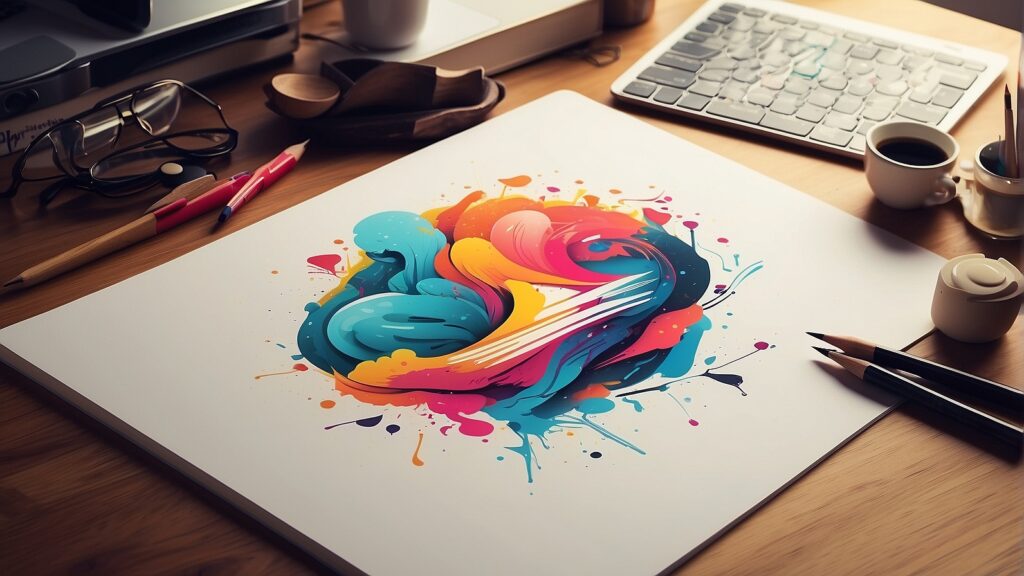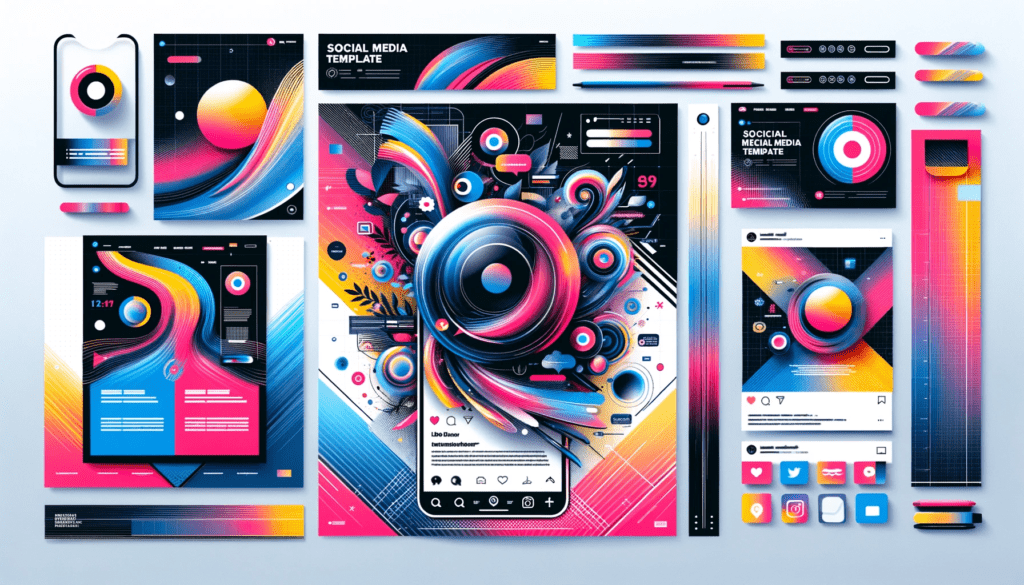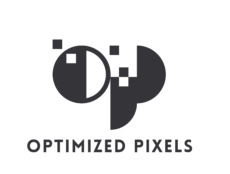Understanding Graphic Design Service Costs – Optimized Pixels’ Efficient Solutions

Graphic design is more than just an aesthetic choice; it’s a crucial component of modern business strategy. It serves as the bridge between a company’s vision and its visual representation, playing a key role in how a brand communicates with its audience. In today’s fast-paced world, where visuals often have a more significant impact than words, graphic design shapes the way a brand is perceived, making it an indispensable tool for effective communication and marketing.
The essence of graphic design lies in its ability to convey messages clearly and creatively. Whether it’s a logo, a website, or a product package, every design element works together to tell a story that resonates with the audience. This storytelling capability is vital in creating a strong brand identity, fostering emotional connections, and building brand loyalty.
Moreover, graphic design is not just about creating visually appealing content; it’s about problem-solving through visual communication. It involves understanding the target audience, the market trends, and the brand ethos to create designs that not only look good but also serve a purpose. This could mean designing an infographic that makes complex data easy to understand or creating a user-friendly website layout that enhances the customer experience.
However, a common challenge for businesses is understanding the costs involved in obtaining high-quality graphic design services. With a myriad of options ranging from freelance designers to full-service agencies, the pricing models and rates can vary significantly. This often leads to confusion and hesitation, especially for startups and small businesses with limited budgets.
This article aims to demystify the costs associated with graphic design services. We’ll explore various pricing models, such as hourly rates, fixed project costs, and subscription-based services. Additionally, we’ll break down the average costs for popular graphic design services like branding, web design, and social media graphics. Our goal is to provide businesses with the knowledge they need to make informed decisions when choosing graphic design services, ensuring they get the best value for their investment.
Common Types of Graphic Design Services
Graphic design is a multifaceted field that offers a spectrum of services, each addressing specific business and marketing needs. Below are detailed insights into some of the most sought-after graphic design services:
WordPress Theme Design:
Overview: In the realm of digital presence, a website is often the first point of interaction between a business and its potential customers. WordPress Theme Design is pivotal in customizing the look and feel of websites.
Details: This service involves creating and modifying WordPress themes to suit a brand’s identity. It includes developing unique layouts, choosing appropriate color schemes, and selecting typography that resonates with the brand’s voice. The goal is to ensure that the website is not only aesthetically pleasing but also user-friendly and aligned with the brand’s message.
Importance: A well-designed WordPress theme can significantly enhance user experience, improve SEO, and drive engagement, making it a vital tool for businesses aiming to establish a strong online presence.
Postcard Design:
Overview: In an age dominated by digital marketing, postcard design remains a powerful tool in the arsenal of direct mail marketing.
Details: Effective postcard design requires a strategic blend of compelling visuals and concise messaging. It’s not just about creating something that looks good – it’s about producing a design that captures attention, conveys a message quickly, and prompts action, all within the limited space of a postcard.
Importance: Whether it’s for a promotional campaign, an event invitation, or brand awareness, a well-designed postcard can stand out in the mail, create a tangible connection with the recipient, and yield impressive ROI for businesses.
Product Packaging Design:
Overview: Product packaging design is more than just a protective cover for a product; it’s a critical marketing tool.
Details: This aspect of graphic design focuses on creating packaging that is not only functional but also aesthetically appealing and informative. It involves understanding the product, the brand, and the target customer to design packaging that tells a story, promotes the brand, and provides essential information about the product.
Importance: Packaging design plays a significant role in branding and customer attraction. The design of a product’s packaging can influence a customer’s buying decision and enhance the unboxing experience, making it a key element in the overall perception of a product and brand.
Each of these services is integral to how a business communicates and engages with its audience. They play a pivotal role in differentiating a brand in a competitive marketplace, enhancing brand recall, and driving customer engagement. Understanding the nuances and importance of these graphic design services is essential for businesses looking to leverage design for successful brand communication.
Social Media Templates

In the digital era, social media has become a cornerstone for business communication and branding. With the ever-increasing consumption of digital content, maintaining a strong and consistent presence on platforms like Instagram, Facebook, and Twitter is crucial for businesses. This is where social media templates become an indispensable asset.
What Are Social Media Templates?
- Definition: Social media templates are pre-designed graphics layouts that businesses can use for their social media posts, banners, and headers.
- Customization: They are typically created by graphic designers and allow for customization in terms of text, images, and brand elements.
- Variety: These templates come in various forms, catering to different types of content – from promotional posts and event announcements to informational content and user engagement posts.
Benefits of Using Social Media Templates
Brand Consistency:
- Importance: Consistency in branding across all platforms is key to building brand recognition and trust.
- Implementation: By using a uniform set of templates, businesses ensure that every post reinforces their brand identity, whether it’s through consistent use of colors, fonts, or imagery styles.
Time Efficiency:
- Content Creation: In the fast-paced world of social media, the ability to produce high-quality content quickly is invaluable. Templates significantly reduce the time needed to design each post from scratch.
- Scheduling: They allow for efficient scheduling and planning of content, ensuring a steady stream of posts that keep the audience engaged.
Professional Appearance:
- Perception: First impressions matter, and a professionally designed template can elevate the perceived quality of a brand’s social media presence.
- Quality: It ensures that even simple posts look polished and well-thought-out, contributing positively to the brand’s image.
Versatility and Adaptability:
- Diverse Platforms: With various social media platforms having different layout requirements and audience expectations, templates can be adapted to suit each platform’s unique needs.
- Campaigns and Promotions: They can be quickly modified for different campaigns or seasonal promotions, keeping the content fresh and relevant.
Cost-Effectiveness:
- Budget-Friendly: For small businesses or startups, investing in a set of templates is more economical than hiring a designer for each individual post.
- ROI: The return on investment in terms of brand consistency, professional appearance, and audience engagement is significant.
By incorporating well-designed social media templates into their digital marketing strategy, businesses can efficiently manage their online presence, maintain brand consistency, and create visually appealing content that resonates with their audience. This ultimately leads to enhanced engagement, stronger brand loyalty, and greater success in the digital space.
Pricing Models in Graphic Design
The cost structure for graphic design services can significantly impact a business’s budgeting and decision-making process. Understanding the nuances of different pricing models is essential for selecting the most suitable option for a company’s specific needs. Here’s a deeper look into the common pricing models in graphic design:
Hourly Rates:
Overview: One of the most traditional methods of pricing in graphic design is the hourly rate. Freelancers and agencies often charge a set fee per hour of work.
Range: These rates can vary widely, typically ranging from $20 to $150 per hour, depending on factors like the designer’s level of expertise, experience, and geographical location.
Suitability: This model is particularly fitting for projects where the scope is fluid or likely to evolve. It allows flexibility for both the client and the designer to adapt to changes or additional requirements that may arise during the project.
Considerations: However, it’s important for businesses to monitor the hours closely to avoid budget overruns, especially for larger or more complex projects.
Fixed Project Costs:
Description: Many designers and agencies offer a flat rate for complete projects. This model involves a predetermined price for the entire scope of work.
Advantages: It’s particularly beneficial for projects with a clearly defined scope and deliverables. This model provides businesses with predictable costs, making budgeting easier and eliminating the uncertainty associated with fluctuating hours.
Planning: It requires detailed upfront planning and a clear understanding of the project requirements to ensure that both parties agree on the scope and deliverables.
Contest-Based Pricing:
Mechanism: This model is primarily facilitated through online platforms where a business can set a budget and open a design contest to a community of designers.
Submissions and Selection: Designers submit their work based on the provided brief, and the business then selects the design that best meets its needs.
Benefits: This model can be advantageous for generating a wide range of creative ideas and options. It’s particularly useful when a company is looking for fresh perspectives or exploring different design directions.
Considerations: While this model can offer variety and creativity, the quality of submissions can vary, and it may not always foster the same level of understanding and collaboration as working directly with a designer or agency.
Each pricing model offers its own set of advantages and can cater to different types of projects and business needs. Businesses should consider factors such as project complexity, the clarity of requirements, budget constraints, and the desired level of collaboration with the designer when choosing a pricing model.
Cost Comparison and Savings with Optimized Pixels
Optimized Pixels’ Unique Pricing Structure
Optimized Pixels stands out in the graphic design market with its distinctive pricing structure, designed to offer substantial cost savings and efficiency over traditional graphic design services. Let’s explore how their Mini, Medium, and Massive plans deliver both financial and time-saving benefits:
Mini Plan
- Monthly Cost: $3,333.
- Service Hours: 60 hours of dedicated design service.
- Cost Efficiency: When compared to the average market rate of $50 per hour for freelance design, this plan translates to monthly savings of about $666.
- Who It’s For: This plan is perfect for businesses needing regular but not extensive design services.
Medium Plan
- Monthly Cost: $4,999.
- Service Hours: 100 hours of comprehensive design service.
- Cost Savings: This plan offers savings of approximately $1,001 per month, assuming a market rate of $50 per hour.
- Ideal For: Suited for businesses that require a balanced volume of design work, the Medium Plan strikes the perfect balance between service and cost.
Massive Plan
- Monthly Cost: $8,333.
- Service Hours: 160 hours of intensive design service.
- Savings Breakdown: This plan yields a considerable monthly saving of around $4,667, compared to standard market rates.
- Target Audience: It’s tailored for businesses with extensive and continuous design needs.
Additional Benefits: Time Efficiency and Centralization: Apart from financial savings, Optimized Pixels’ plans offer significant time efficiencies. By centralizing a variety of design needs under a single agency, businesses eliminate the complexities of coordinating with multiple freelancers or agencies. This streamlined approach saves valuable time in the design process, allowing businesses to focus more on their core operations.
Whether it’s the Mini, Medium, or Massive plan, Optimized Pixels offers a range of options to suit different business needs. Each plan is structured to provide not just cost savings but also to enhance efficiency and streamline the design process, making Optimized Pixels an attractive option for businesses looking to optimize their graphic design operations.
Navigating the cost of graphic design services can be a complex task for businesses. This article provided an overview of the typical costs associated with various graphic design services, the different pricing models, and a detailed comparison of market rates versus the value-packed plans offered by Optimized Pixels. With its Mini, Medium, and Massive plans, Optimized Pixels stands out as a cost-effective, time-saving solution for businesses seeking high-quality, on-demand graphic design services. The efficiency and savings provided by these plans demonstrate a commitment to delivering value and excellence, making Optimized Pixels an ideal partner for your graphic design needs.
Resources
https://www.bark.com/en/gb/graphic-design/cost-of-a-graphic-designer/

